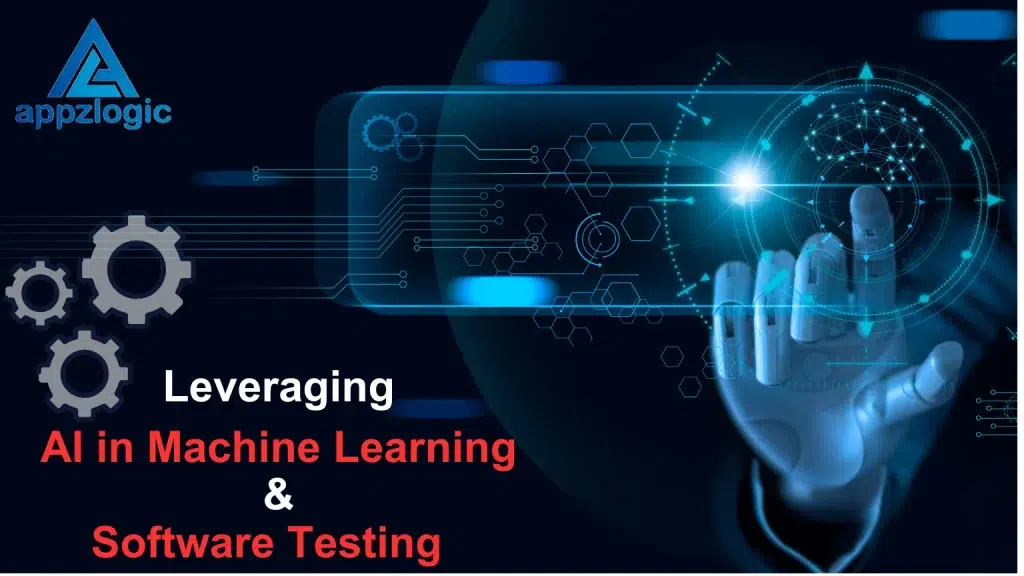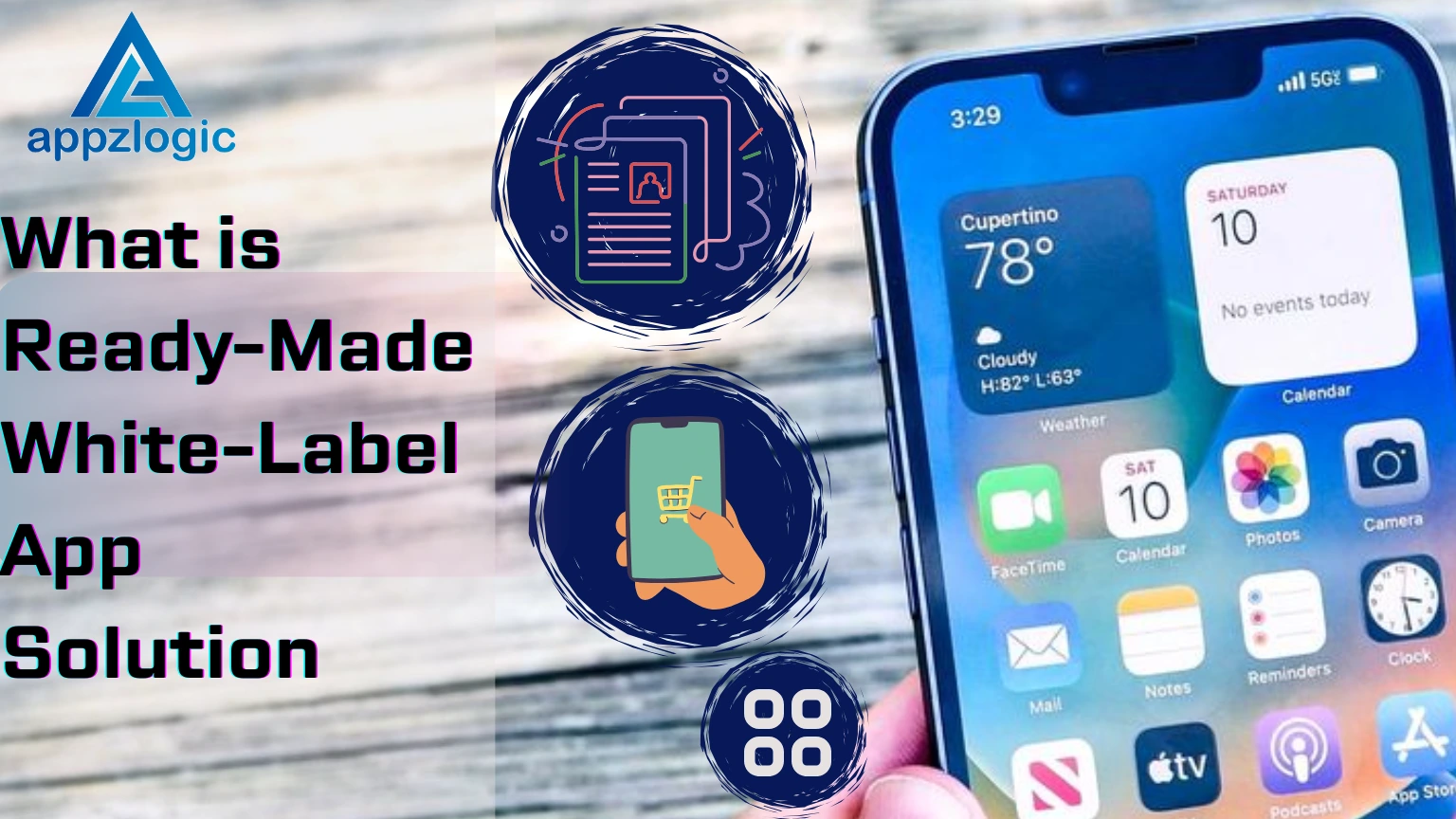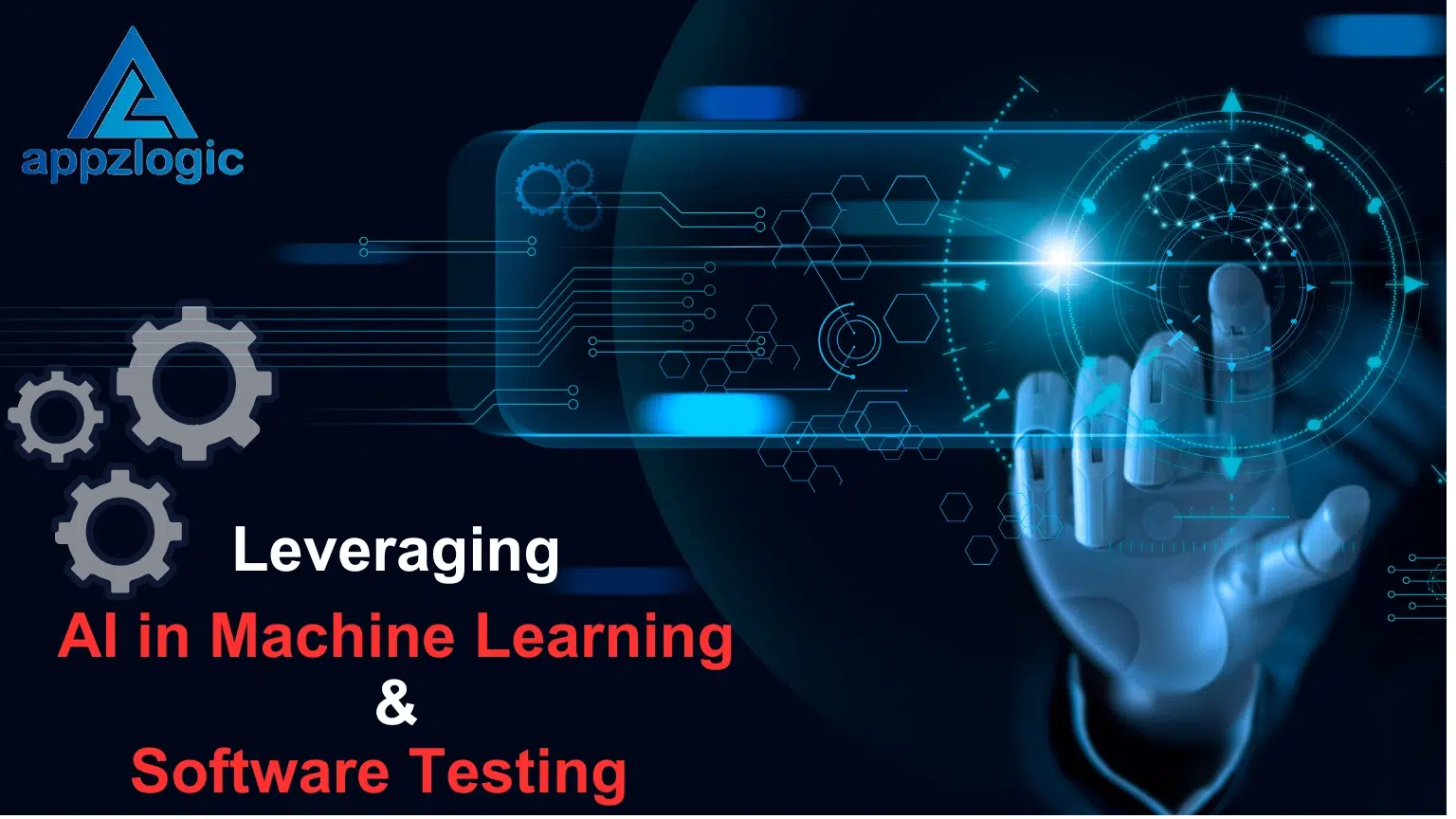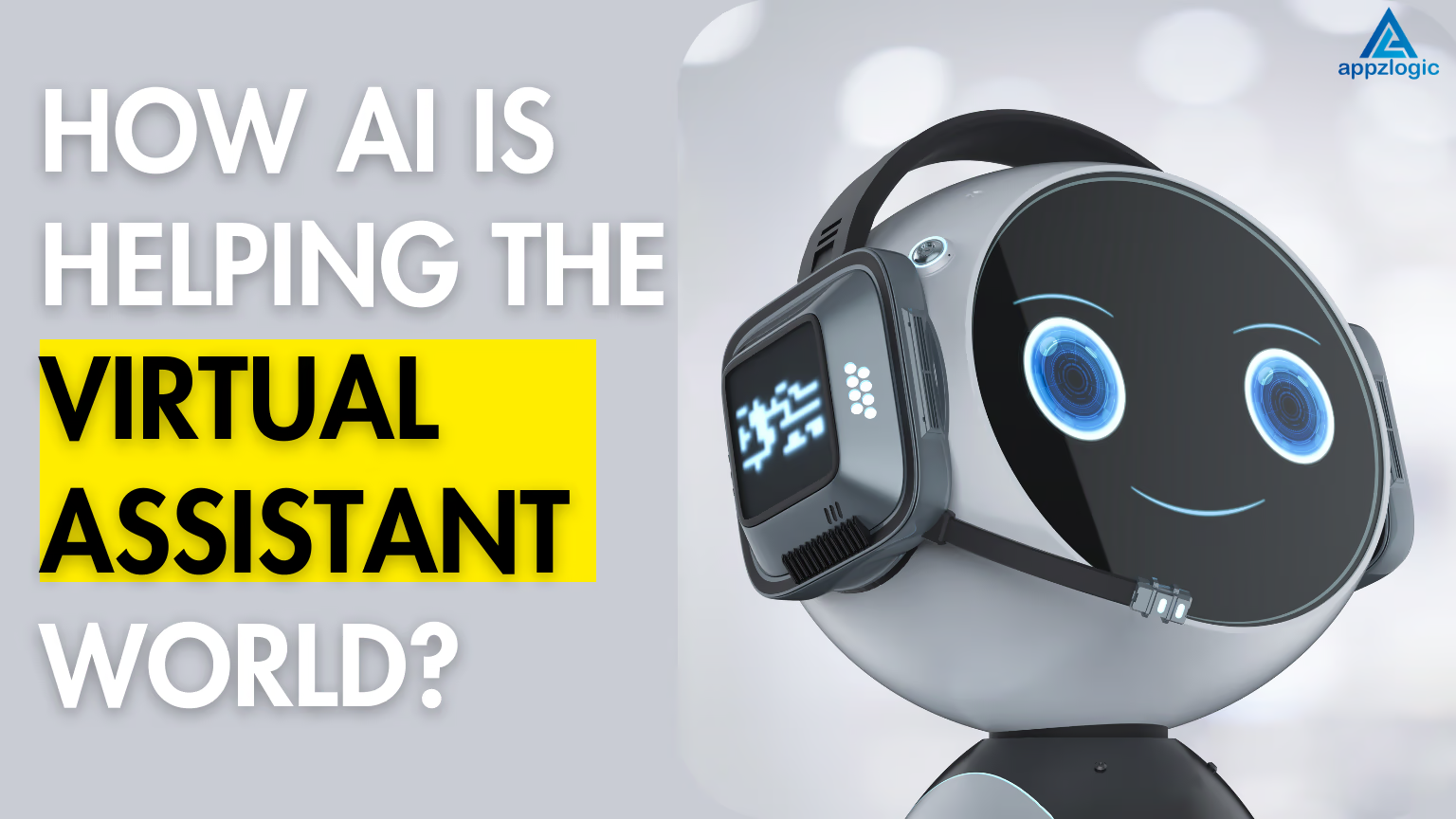
Leveraging AI in Machine Learning and Software Testing
Artificial Intelligence provides higher efficiency in workflows. AI can be used in accurate software testing. It reduces the manual approach and provides quality results. Among the areas witnessing transformative impacts are machine learning (ML) and software testing. Leveraging AI in software testing has unlocked new possibilities for enhancing Quality Assurance, improving testing efficiency, and creating intelligent testing systems.
Recent research from Gartner predicts that by 2025, half of cloud data centers will use advanced AI and ML capabilities. Which will result in 30% higher operating accuracy.
The Role of AI in Software Testing
Traditional software testing often involves repetitive tasks and lots of manual effort and time. With AI, these challenges are being addressed head-on. AI algorithms simulate human decision-making processes, identifying patterns and inefficiencies that traditional testing methods don’t provide. Here are some key contributions of AI in software testing:
- Test Case Generation: AI systems analyze historical data and codebases to automatically generate test cases. This saves significant time and ensures thorough coverage of edge cases.
- Defect Prediction: By leveraging machine learning testing tools, AI predicts areas in the software where defects are most likely to occur, allowing testers to focus their efforts effectively.
- Self-Learning Systems: Intelligent testing systems learn from past test cycles, improving accuracy and efficiency over time. These systems adapt to new code changes without manual updates, enabling continuous testing.

Benefits of Machine Learning for Automated Testing
Machine learning (ML) offers a range of benefits for automated testing, making the process more efficient, accurate, and cost-effective.
- Smarter Test Creation:
ML can analyze past data to identify patterns and generate test cases automatically. It helps testers by creating relevant test scripts based on the software’s previous behaviors and common issues, reducing the manual effort required in test design.
- Faster Bug Detection:
ML algorithms can quickly process large volumes of data and spot unusual patterns or bugs that might go unnoticed in manual testing. This early detection of issues allows for faster fixes and improved software quality.
- Better Test Coverage:
ML helps ensure comprehensive test coverage by analyzing both the code and application behavior. It can identify overlooked areas or edge cases that may not be covered by traditional testing methods, reducing the chances of missed defects.
- Self-Updating Tests:
When software undergoes changes or updates, ML can automatically adjust and update test cases to match the new requirements. This means testers don’t have to manually rewrite or modify test scripts after every update, saving time and ensuring tests remain current.
- Time Savings:
ML automates repetitive and time-consuming tasks, such as executing test cases and generating reports. This frees up testers to focus on more complex tasks, improving overall efficiency and speeding up the testing process.
- Predicting Potential Issues:
ML can use historical data to predict where problems are likely to occur in future software releases. This proactive approach allows testers to focus on high-risk areas before issues arise, improving overall testing effectiveness.
- Improved Accuracy:
With machine learning, the testing process becomes more consistent and reliable. Since ML algorithms are not prone to human error, the results are more accurate, leading to higher quality software and fewer defects in the final product.
- Cost Efficiency:
While there is an initial investment required for ML tools and infrastructure, over time, machine learning in automated testing reduces resource costs. It cuts down on manual labor, accelerates the testing process, and helps catch bugs earlier, ultimately lowering the cost of software development and maintenance.
- Continuous Learning and Improvement:
ML systems continuously learn and adapt from new data, improving over time. The more data the system is exposed to, the better it becomes at detecting patterns, identifying bugs, and optimizing the testing process. This continuous improvement ensures that the testing process stays up to date with evolving software needs.
Generative AI (GenAI) is a form of AI that is trained to create images, text, videos, and other types of media based on given prompts.
Machine Learning Testing Tools
- Machine learning (ML): This testing tools play a critical role in modern software testing. These tools leverage data-driven insights to optimize the testing process, making it faster and more reliable. Some of the prominent ML testing tools include:
- Applitools: It is known for its visual AI capabilities, Applitools ensures visual consistency across web and mobile applications by detecting even minor UI changes.
- Testim: Testim uses ML algorithms to create and maintain automated tests. Its self-healing capabilities minimize test maintenance efforts, making it a preferred tool for agile environments.
- Mabl: Mabl integrates AI-driven testing with DevOps workflows. It provides insights into application performance and usability while continuously improving test scripts.
- Functionize: This tool combines AI with Natural Language Processing (NLP) to allow testers to write test cases in plain English, bridging the gap between technical and non-technical teams.
Implementing AI in Software Testing Processes
Implementing AI in Software Testing processes has the potential to revolutionize how testing is approached, making it faster, more efficient, and significantly more accurate. As organizations strive to deliver software faster while maintaining high-quality standards, AI provides an opportunity to automate and optimize many of the manual and repetitive tasks that typically consume a considerable amount of time and resources.
Traditional Software Testing methods involve manually writing test cases, executing them, and manually reviewing results, which can be time-consuming, full of errors, and less effective in identifying hidden issues. AI, on the other hand, leverages machine learning (ML) and other intelligent technologies to enhance these processes and improve the overall software development life cycle.
One of the primary benefits of incorporating AI into software testing is its ability to automate the creation of test cases. Traditionally, testers manually design test cases based on specific requirements or user stories. With AI, this process becomes more dynamic. Machine learning algorithms can analyze historical data, patterns in the code, and previous bugs to automatically generate relevant and efficient test cases. This reduces the workload of manual testers and allows them to focus on more complex tasks such as exploratory testing or identifying high-risk areas.
Another area where AI can have a significant impact is in bug detection. AI can analyze vast amounts of data from software systems, logs, and test results to identify patterns or anomalies that indicate potential defects. Unlike manual testing, which may rely on testers to observe and document issues, AI can quickly and efficiently detect subtle bugs that might otherwise be overlooked.
AI-driven Test Case Generation Techniques
AI driven test case generation techniques provide the power of artificial intelligence, particularly machine learning (ML), to automate and enhance the creation of test cases. These techniques aim to improve the efficiency, accuracy, and coverage of software testing by utilizing intelligent algorithms to analyze software code, user behavior, and historical data. Here’s an overview of some of the key AI-driven test case generation techniques:
- Model-Based Testing (MBT) with AI:
Model-based testing is a technique where test cases are generated based on models that represent the system’s expected behavior. AI can enhance this approach by automatically generating models from the software’s code, user interfaces, or other artifacts. Machine learning algorithms can analyze the codebase or logs to identify patterns and then automatically generate models that reflect the most relevant user interactions. These models can then be used to generate a wide variety of test cases, ensuring broad coverage and quality results.
- Genetic Algorithms (GA) For Test Case Generation:
Genetic algorithms (GAs) are optimization techniques that rely on natural selection. The process starts with the creation of random test cases. Through iterative testing, the algorithm employs mechanisms like selection, crossover, and mutation to refine these test cases. Over time, this evolution produces more efficient solutions that effectively explore diverse code paths and tackle potential edge cases.
- Reinforcement Learning (RL) For Test Case Generation:
Reinforcement learning is a subset of machine learning where an agent learns to perform tasks by interacting with an environment and receiving feedback in the form of rewards or penalties. In the context of test case generation, RL can be used to generate tests that maximize the probability of finding bugs. The RL agent explores different testing strategies, and with each iteration, it refines its approach based on the success or failure of its previous actions.
- Natural Language Processing (NLP) For Test Case Generation:
Natural language processing (NLP) can play a critical role in AI-driven test case generation, especially when deriving test cases from user stories, requirements, or specifications written in natural language. NLP algorithms can analyze these textual documents and automatically extract key information to create relevant and meaningful test cases.
- Deep Learning For Test Case Generation:
Deep learning, a type of machine learning that mimics the human brain’s neural network, can be used to generate test cases by analyzing large datasets of past test executions, software code, and bug reports. Deep learning models can identify complex patterns in software behavior and generate test cases that focus on high-risk areas or previously unexplored scenarios. These models can also adapt to new data, making them highly flexible and capable of generating test cases for different types of software systems.
- Search-Based Software Testing (SBST) with AI:
Search-based software testing is an approach that uses search algorithms to find test cases that maximize certain goals, such as high code coverage or detection of defects. AI can be applied to enhance SBST by using more intelligent search techniques, such as using machine learning to predict the most effective search paths or applying neural networks to evaluate the relevance of different test inputs.
AI-enhanced SBST techniques can adapt to changes in software by constantly adjusting the search parameters, making it a dynamic and powerful method for generating high-quality test cases.
- Automated Path Generation and Coverage Analysis:
AI can also be used to analyze the software’s control flow and generate test cases that maximize coverage. By analyzing the flow of data and execution paths within the software, AI can automatically generate test cases that cover various decision points, loops, and other critical paths in the code. This ensures comprehensive test coverage, including edge cases and rare scenarios that might otherwise be missed by human testers.
Moreover, AI can analyze the execution of previous test cases and identify gaps in coverage. It can then generate new test cases to fill these gaps, ensuring that all possible paths are thoroughly tested.
Challenges Of Integrating AI In Software QA
Implementing AI in software testing presents several challenges that includes:
It’s heavy dependency on High-Quality Data for training. Insufficient, outdated, or biased data can lead to inaccurate predictions and unreliable test results. Additionally, maintaining and updating these datasets to ensure relevance requires ongoing effort and resources.
Another critical challenge lies in the complexity of AI models, which can be difficult to understand and interpret. This “black-box” nature can lead to hesitation in trusting AI-generated outputs, especially in industries where accuracy and accountability are paramount.
Ethical concerns also arise, particularly around transparency and decision-making. For instance, automated decisions in software testing can obscure who is responsible when errors occur, raising accountability questions.
Scalability is another factor to consider. While AI systems may work well for smaller or controlled environments, scaling them to larger or more dynamic systems can introduce new issues, such as handling diverse use cases or adapting to rapidly evolving software.
Lastly, Regulatory and Compliance challenges can complicate the adoption of AI in software testing. Industries with strict guidelines may require AI systems to adhere to specific standards, which can slow down implementation and increase complexity.
Future Trends In AI And Machine Learning For Testing
The future of AI in software testing holds exciting possibilities, driven by technological advancements in Artificial Intelligence, Machine Learning (ML), and other emerging fields. Here’s a breakdown of the headings and their implications:
- Hyper-Automation: Hyper-Automation involves the Integration of AI, ML, and Robotic Process Automation (RPA) to achieve end-to-end automation of testing processes. This means that repetitive and time-consuming tasks such as test case generation, execution, and reporting will be fully automated. As a result, testing cycles will become faster, more efficient, and less prone to human error, enabling teams to focus on higher-value activities like innovation and strategy.
- Predictive QA: Predictive Quality Assurance (QA) uses AI-driven Predictive Analytics to foresee potential issues before they become problems. By analyzing historical data, patterns, and trends, AI can predict vulnerabilities or bugs in the software, enabling teams to address them proactively. This shifts the approach from reactive testing (fixing issues after they occur) to proactive testing, which significantly enhances software reliability and user experience.
- Increased Collaboration: Intelligent testing systems equipped with advanced interfaces will foster greater collaboration among developers, testers, and business stakeholders. AI tools will provide shared insights and actionable recommendations, making it easier for cross-functional teams to work together. This will bridge communication gaps, streamline decision-making, and align testing goals with business objectives, ultimately improving overall project outcomes.
- Democratization of Testing: With AI-powered tools and natural language processing (NLP) capabilities, testing will become accessible to non-technical users. These tools will simplify the creation and execution of tests, allowing individuals without deep technical expertise, such as business analysts or product managers, to participate actively in the testing process. This democratization will make testing more inclusive and improve the quality of software by incorporating diverse perspectives.
- Sustainability: AI-driven systems will optimize resource utilization during testing, such as minimizing hardware usage and reducing energy consumption. By identifying inefficiencies and streamlining operations, these systems can lower the environmental impact of testing activities. AI is reducing manual efforts for example AI Powered Chatbot helps Businesses experience a 50% reduction in average response times.
Conclusion
AI in software testing is a transformative force reshaping how we ensure software quality. By integrating intelligent testing systems and leveraging machine learning testing tools, organizations can achieve unparalleled efficiency, accuracy, and innovation. Automated testing with AI empowers teams to focus on strategic tasks, enhancing both individual and organizational growth.
As the industry evolves, embracing AI software QA will become essential for staying competitive in an increasingly digital world. The future belongs to those who adapt and innovate, and AI is the key to unlocking that potential.
Frequently Asked Questions
AI in machine learning refers to the use of advanced algorithms and computational models that allow systems to improve their performance.
AI improves ML by automating data cleaning, tuning hyperparameters, and optimizing models through reinforcement learning and architecture search.
AI helps Automate Repetitive Testing Tasks, allowing for faster and more efficient testing cycles.
Neural Networks, Genetic Algorithms and Natural Language Processing (NLP), Used to analyze and generate test scripts from human-readable specifications.
No, while AI can automate many aspects of testing, human testers are still essential for exploratory testing, understanding user behavior, and managing complex test environments.



